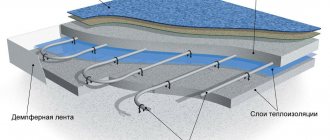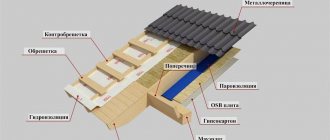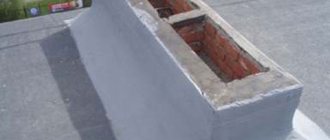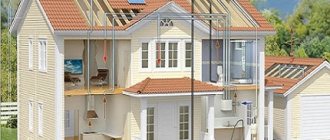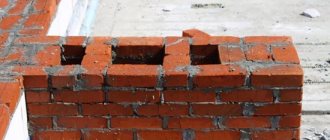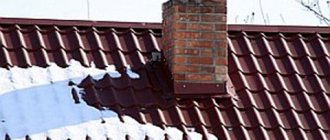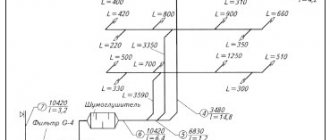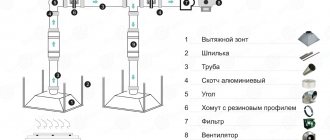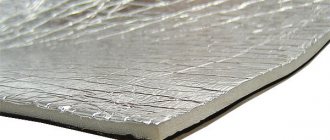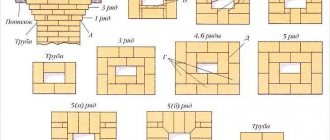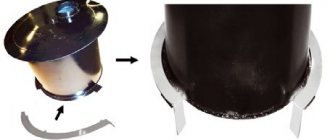Ventilation passage through the roof
Without ventilation, it is impossible to spend time comfortably inside a building or create optimal working conditions for people, and therefore it must be thought out and planned at the design stage of any building. Usually ventilation ducts are led directly through the roof, but how can you ensure that the roof does not leak after such manipulations and does not let its owners down? To do this, it is important to install the ventilation passage through the roof correctly and in compliance with all requirements.
Ventilation passage through the roof
Ventilation units for passages through soft roofs
Roof ventilation passage elements
The ventilation system of a private house is a complex and extensive network of air ducts. They can be combined into single supply or exhaust lines, or have independent access to the outside atmosphere.
All channels sooner or later lead to the outer surface of the roof to pick up fresh supply air, or throw out the exhaust air Source tupikov.ru
The passage of the air duct through the roof forms a through hole in it, which requires complete sealing, insulation and other important procedures. The possibility of rain or melt water entering the hole and the formation of a cold section of the roof lead to wetting of wooden and metal parts and their premature failure. A particular danger is condensation that settles on cold surfaces. It is formed due to the difference in temperature between the internal humid air and the surface of the air duct, open roof area and other adjacent elements.
To solve such problems, special passage units (CP) are produced, which are designed to ensure the exit of air channels without disrupting the operating mode of the roofing system. The design of the units in a simplified form is a section of an air duct with a sealing casing, forming a platform around the hole, hermetically connected to the roofing.
Ventilation passage through the roof Source pinterest.com
On the roof surface there may be several similar units connected to different lines - exhaust, supply, separate ventilation ducts from the kitchen, sewerage, basement (basement) room and other systems.
What is it and why is it needed?
The ventilation passage unit (or abbreviated as UP) is installed on the roof and can have a different, although largely similar design for different models. It performs the function of an aerator and is used for both forced and natural processes of transporting polluted air from indoors to outdoors.
Schematic representation of the roof passage units
On a note! According to regulatory documents, the indoor air temperature cannot exceed 80 degrees, humidity - 60%. In this case, the gas-air mixture must be chemically inert. It is to improve the indoor air quality that ventilation systems are used, the output of which is almost always located on the roof.
Ventilation units on the roof
Passage units can be installed on special reinforced concrete glasses or directly on the roofing material. Their size and shape are significantly influenced by the type of roof covering, the thickness and characteristics of the materials used to create the roof pie, and the type of ventilation system itself. And the choice of the latter will depend on what conditions will be created inside the premises being used - the degree of humidity, dust, gas contamination, etc. is taken into account.
Mounting cup (passage unit) for a square shaft for fans VKRS-DU and VKRV-DU
The manufacture of passage units is carried out in accordance with the requirements of GOST 15150. The main requirements for the CP are as follows:
- the thickness of the metal from which it is made is at least 1.9 mm;
- the diameter of the round part of the element is 10-12.5 cm. If the UEs have a square cross-section, then the dimensions can be any;
- the surface must be treated with anti-corrosion compounds - usually GF-021 primer;
- the size of the support ring must be larger than the diameter of the pipes;
- the maximum length of the entire structure of the passage unit cannot exceed 1 m, excluding the valve for the electric drive.
Passage unit dimensions
These penetrations are mainly used for permanently operated ventilation systems.
GOST 15150. Machines, instruments and other technical products. Versions for different climatic regions. Categories, operating, storage and transportation conditions regarding the impact of environmental climatic factors File for download (click on the link to open the PDF file in a new window).
UP installation
The roof structure with a built-in control unit for the ventilation duct exit is often called a roof penetration. The passage unit is fixed on the roof using braces secured with brackets and clamps. The UP branch pipe is connected to a flange, fixed to the concrete glass with an anchor as a support. Often, a “skirt” is constructed on the roof penetration to protect the joints from water getting inside.
The outlet of the ventilation duct and ventilation of a soft roof (as opposed to a seam roof) has some features in the installation of the UP. It is made from galvanized steel sheet along with mineral wool, which serves as a heat insulator. Deflectors (also galvanized) or umbrellas are installed inside to protect against moisture.
Advice! If there is a fan in the unitary unit, it is recommended that the internal part be made of perforated steel sheet.
The power supply output is placed in plastic casings. The design of the ventilation unit on the attic roof in this embodiment will perform a sound-absorbing function.
For reinforced concrete roof structures, concrete slabs with ready-made holes for the exit of ventilation ducts are installed at the penetration points. When the size of such an opening cannot provide the required reliability characteristics of the floor slab, the roof penetration and ventilation outlet should be constructed in monolithic concrete.
Installation of a ventilation outlet on the roof.
The structure of the unit and the ventilation system itself
The ventilation system consists of pipes that help remove heated or polluted air from the inside of the building to the outside. As for industrial premises, enhanced air circulation is required, which is created by connecting a special powerful fan to the system. The larger the room, the more complex and powerful the ventilation system should be.
The ventilation unit for the passage through the roof is a design that allows not only to remove polluted air outside, but also to ensure reliable sealing of the roof and protect it from atmospheric precipitation entering the under-roof space. Any passage unit includes a hole of the required diameter in the roof, into which a pipe is inserted, which is attached to a special concrete glass mounted on the ceiling. The UE is fixed to it using anchors. On metal roofs, fastening is carried out according to the same principle, but instead of an equipped durable glass, a similar metal one is used.
Roof access node
The support ring, also included in the structure of the passage unit, will ensure reliable connection of the structure to the roof surface. The connecting flanges will help secure it better - the lower one is mounted on the air duct, the upper one serves as a support for the ventilation hood, which protects the pipe from precipitation getting into it. A special ring is also installed inside the pipe, which is responsible for removing condensate.
Stages of installation of a flexible passage unit
There are a large number of varieties of passage units on sale. They differ in their design and other parameters.
Round passage unit
Table. Types of passage nodes.
Arrangement of a passage for smoke
Diagram of the connection between the chimney and the roof.
In most cases, the smoke ventilation duct in a single- or gable roof is placed taking into account the minimum distance to the roof ridge. In this case, the main section of the chimney must be installed under the roof. This will minimize the likelihood of moisture appearing on its inner coating. However, some experts recommend installing the smoke duct directly through the roof ridge.
If the smoke duct is mounted directly on the roof slope, there is a possibility of snow deposits forming on its surface. This may cause the chimney to leak. If a chimney is installed through a roof ridge, the rafter rows must be partially destroyed. For this reason, the rafter structure is usually reworked, but it will be impossible to place an attic space under the roof. However, this type of smoke channel arrangement has its advantages, which include ease of installation and solving the problem of the formation of snow deposits.
The installation of a fire protection system must be done during the installation of a ventilation passage through a wooden surface and roof. When installing this system, it is necessary to provide adequate protection and shutoff in the event of an unwanted fire, which could be caused by excessive heating of the pipe.
Diagram of a passage unit with an insulated valve.
The chimney will need to be covered with a special umbrella, this is necessary to eliminate the risk of cold air and moisture entering the smoke duct. It is not recommended to place the chimney ventilation system in the roof valley, as this increases the likelihood of depressurization of roof seams and pipe coating. In addition, snow deposits will accumulate there and increase the risk of ice formation.
If air exchange is planned under a pitched roof, you will need to erect wooden rafter rows, and they tend to ignite quickly. For this reason, it is necessary to arrange special openings between the rafters and ventilation, which are made in accordance with SNiP standards. In the process of carrying out an air exchange system through the thermally insulated layers of the roof, it is necessary to use a type of construction that is designed to protect the heated pipe from possible materials with an increased degree of ignition. To do this, you will need to arrange a rectangular type node, which looks like a box. It must be filled with any non-flammable material, for example, glass wool. The figure shows a passage assembly with a heat-insulating valve.
Ventilation passage through the roof
Ventilation is the most important life support system for buildings used as residential, industrial, commercial or administrative. Its task is to remove exhaust air, saturated with carbon dioxide, polluted or gassed, to the street. To do this, the air duct pipe is led through the ceilings to the roof of the house. An incorrectly installed ventilation passage through the roof is often the cause of leaks and problems with the operation of the system. This article will tell you how to properly install a roof penetration to avoid these troubles.
Ventilation system design
A ventilation system is a pipe that ensures the removal of heated air with the products of respiration and vital activity into the atmosphere. Most private houses are equipped with natural ventilation, the functioning of which is based on the law of convection, the property of heated gases to rise upward.
Industrial, administrative and commercial buildings, where a large number of people are located or special equipment is working, require increased air circulation, which can only be provided by forced ventilation powered by a powerful fan. To determine the type of duct that is suitable for a particular structure, consider the following factors:
- Room volume. The larger the area of the house, the more air there is. This means that more powerful ventilation will be required to ensure circulation.
- Gas and dust coefficient. These indicators are usually calculated for industrial premises where, due to work or the use of equipment, dust and harmful gases appear in the air.
- Humidity and temperature indoors. Ventilation makes the microclimate in a building more suitable for human life, optimizing humidity and temperature to a comfortable level.
- Number of people. In the process of breathing, people consume oxygen and produce carbon dioxide, so the more people there are in the room, the better the ventilation should work, removing waste air. Therefore, air duct installation is carried out primarily in administrative and commercial buildings.
Note! Another reason to think about the need for ventilation equipment in a private residential building is the presence of heating equipment that runs on solid fuel. During the combustion of wood, oxygen is involved, which causes the air in the room to “burn out”, making it stuffy and difficult to breathe. Therefore, when installing a wood-burning stove or fireplace, they not only build a chimney, but also install an air duct passage through the roof.
Installation of penetration
In modern private houses equipped with gas or wood heating, installation of ventilation is mandatory. During cooking, breathing, washing, drying clothes, as well as performing water procedures, a large amount of water vapor is formed, which must be removed so that the home does not become hot, stuffy and humid. The passage unit through the roof of the ventilation pipe is installed after completion of installation work on assembling the air duct indoors. To do this, you will need a rubber or silicone seal (Master Flash), silicone-based sealant, a screwdriver, self-tapping screws, and a penetration. Installation is carried out as follows:
- The location of the air duct outlet is determined. Building codes require that ventilation pipes be placed close to the ridge of the roof so that the opening is located between the rafters.
Professional roofers believe that an ill-equipped ventilation pipe passage through the roof is the cause of leaks in 2 out of 10 cases. This often occurs due to the location of the ventilation outlet, when a snow pocket does not form around it. The snow surrounding the pipe melts over time and penetrates under the roof. Therefore, some craftsmen recommend venting the air duct directly through the ridge. It is worth noting that this method violates the integrity of the roof rafter frame, and therefore has many opponents.
Equipment for ventilation installations for soft roofs
The simplest process is to install a ridge aerator. In order to calculate consumption. You just need to measure the length of the roof, since this type of ventilation system is installed along the entire upper part of the ceiling.
We recommend: How to prepare a roof for a soft roof?
This type of device is recommended to be installed if the roof structure has a slope angle of 12 to 45°. With these values, the ridge system can provide the most efficient removal of vapors from under the ceiling. Deviation from the specified values is a reason to select a different type of ventilation system.
The ideal rectangular shape allows air to circulate evenly throughout the attic space and flow freely to the outside.
How are usage rates calculated?
- Vents must be installed on roof overhangs. They are responsible for the flow of fresh air;
- Aerators must be installed from the beginning to the end of the ridge. Since small products are used, they must be tightly and hermetically fastened together. The result should be a continuous structure without division into segments;
- When the products are already in place, soft tiles are attached over their entire length. It covers the ventilation, visually creating the appearance of a continuous ceiling.
Fastening technology
First of all, you should cut a groove for ventilation. This task can be quickly completed using a circular saw. It is often cut out at the very top of the ridge. It is also possible to arrange the holes on the sides.
The gap is determined relative to the individual characteristics of a particular building. The larger the building and attic space, the wider the cutting width will be. According to the standards, the slots do not extend to the edges of the roof. It is necessary to retreat about 30 cm on each side.
Soft tiles are laid on the edges of the upper part of the ceiling. It must be tightly applied to the slot for ventilation.
After this, aerators are installed. Installation is carried out carefully, in compliance with all recommendations regarding the density of joints. You also need to carefully work with all fastening materials so as not to damage the plastic structure of the aerator. The ridge is fixed with professional long-type roofing nails. Specialized screws are also often used. They will be easier to work with for an inexperienced roofer.
A characteristic feature of ridge ventilation is that they are assembled into one whole like a construction set.
The tile petals should be laid overlapping in the simplest way. The installation principle should not differ from roofing work on slopes. The task is to create a visual effect of uniformity.
To prevent the soft ceiling from peeling off from the ridge in the future, a sealant is used. It is better to choose a higher quality silicone-based sample. It has unique adhesive properties and holds both layers for a long time.
TechnoNIKOL soft roofing deserves special attention. Based on its characteristics and functionality, it is considered one of the best offers on the domestic market. Just like other types of floors, this material requires the installation of a high-quality ventilation system.
Aerators perform two main functions:
- Ventilation of the attic (to avoid damage in winter and excessive heating in summer);
- Ventilation of the gap between the roof and the waterproofing layer.
Why do people install TechnoNIKOL roofing strips:
- The design and structure are not externally different from the main layer of the roof;
- The ability to choose the most suitable color among the company’s proposals;
- The materials used for the manufacture of ventilation systems do not corrode and are also resistant to sudden temperature changes;
- A large selection of aerators for arranging the roofs of private houses;
- Convenient installation on the finished floor;
- Technonikol systems have increased tightness and, at the same time, have a simple design;
- The products have proven themselves well in various regions with a wide variety of climates;
- The color of the products does not fade over time.
This is one of the best examples of high-quality ventilation systems. Its installation principle is no different from other options. Simply remove moisture from the roofing pie and install a reliable aerator.
Installation of ventilation passage through the roof
Running a pipe to the roof is a task that may not seem very difficult to most homeowners.
However, the ventilation passage through the roof must be arranged very carefully in compliance with all technical standards and regulations. Only under these conditions will the integrity of the roof pie be preserved and the ventilation system will work effectively. Most often in private housing construction, ventilation ducts from the bathroom, kitchen and living rooms are led through the ceiling to the roof. A roof ventilation duct that ends in a pipe that rises above the roof can provide effective air draft. This method of arranging ventilation ducts makes the air in the house clean, since all unpleasant odors escape through the passage to the street.
Natural air circulation appears due to the laws of physics - due to different air pressure inside and outside the house.
Taking into account SNiP, the outlet of the air duct passage through the roof is required for:
- air exchange in the attic or attic of the house;
- installation in the wall of the vent section of the sewer shaft (the vent pipe is connected to the sewerage system and to ventilation to remove odors);
- supply of clean air enriched with oxygen.
Ideally, the development of a ventilation passage through the roof should be carried out at the design stage or during construction before closing the contour of the house (installation of the roof, doors and windows).
But in practice, it is often necessary to reconstruct the roof passage in an already constructed building and build on the existing layout features of the premises.
If there are errors in the arrangement of the passage unit, this is fraught with a high concentration of unpleasant odors, carbon dioxide, and the appearance of reverse draft.
The pass-through ventilation unit is a plastic, metal or combined pipeline. It is placed in a hole in the roof and secured in a metal cup. After installation, the hole must be sealed and insulated. The air duct of the ventilation system is connected to the penetration from below, and a protective cap is placed on top.
To organize the passage of the pipe, you can use a ready-made product, which is designed for ventilation on the roof. This is a pipe that consists of an outer polypropylene layer and a galvanized metal pipe inside. At the bottom of the product, where the air duct is installed, there is thermal insulation, and at the top of the structure there is a protective drip.
The design and installation of the unit will depend on a number of factors:
- roof slope angle;
- type of roofing material - profiled sheet, ceramic or soft tile;
- roof type.
You must first take care of sealing and thermal insulation of the area where the passage unit is installed.
Since to install the pipe it is necessary to cut out part of the roof, including the outer section, the layer of hydro- and thermal insulation after attaching the structure must be well sealed. If this is not done, water will flow into the house through the ventilation pipe, and the temperature in the rooms will be disrupted.
There are certain requirements:
- You should not connect several ventilation passages into one, but make a separate exit to the roof for all parts (sewer riser, hood, attic, living rooms);
- structures must be vertical without bends, so that air can freely move to the street;
- for the construction of shafts, it is necessary to select high-quality shaped products that can ensure tightness and unhindered movement of air masses;
- Ideally, ventilation shafts should pass through the ridge in the middle of the structure or at a close distance near it.
Installing ventilation passages through or near the ridge is the best solution for a gable roof that is not equipped with a rafter system with a ridge.
The main element of the passage unit is the exit - a shaped product in the form of a pipe, which has a flat base corresponding to the type and covering of the roof. For different engineering structures, different types of shaped products are used: the passage part for pipes, the outlet for the sewer riser and for the hood.
Separately in stores you can find special ventilation units for the passage through the roof for corrugated sheets, metal tiles, for flexible and seam roofs, as well as universal products. Many types of passages correspond to the geometry of the roofing materials, due to this they provide strong sealing of the assembly during installation.
It is not very difficult to install a ventilation outlet on the roof yourself. You need to have the required materials and tools, and the installation must be carried out taking into account a pre-thought-out project and follow certain steps.
The installation of the pipe on the roof must be calculated so that it has a minimum bend or slope.
It is desirable that the pipe is located clearly above the internal riser of the ventilation shaft. If this cannot be done for some reason, it is best to use a flexible corrugated pipe to connect to the nodes.
The height of the pipe, which is located above the roof, is determined in SNiP:
- 1. On a flat roof, the size of the pipe must be selected taking into account its diameter, but not more than 0.5 meters.
- 2. When installing a ventilation outlet near the chimney, its size must be equal to it.
- 3. If the node is far from the roof ridge (more than 4 m), you need to draw an imaginary line from the top of the roof along the roof down. The top of the pipe must be on the conventional line of intersection of the horizon and the ridge.
- 4. For a pitched roof, the distance of the ventilation outlet from the ridge is important: if the pipe is located further than 60 cm, then its size must be more than half a meter.
Purpose and installation of the ventilation system passage unit
Schematic representation of the nodes of the passage through the roof.
The main task of roof air exchange is to extract recycled air. Installation of such a system is usually carried out on the basis of GOST-15150. Its contents display the distance from the air exchange passage to the edges of the slab, as well as the standard size of openings in the ceiling slabs. Passage units are also used for chimneys that are installed in houses with a wood heating system (fireplace, stove).
Materials, tools and accessories that will be needed for arranging roof air exchange:
- set of ventilation units based on aluminum;
- anchor bolts for fastening;
- fireproof material (glass wool);
- metal glasses;
- thermal insulation (mineral wool);
- wooden rafters for roof restoration;
- expanded range of industrial tools.
Roof ventilation is divided into square, oval, round and rectangular. This depends on the types of roof and exhaust ducts.
Passage nodes are openings in ceilings. Aluminum pipes are installed in these openings, which are placed directly on the roof of the building.
It is recommended to use an aluminum sheet with a thickness of at least 1 mm. The ventilation system is produced in different sizes, among which it is easy to choose the right one. Air exchange systems with metal pipes are divided into forced and natural. In order to correctly select the necessary passage units, you will need to take into account certain characteristics of the following factors:
- degree of humidity;
- amount of gas released;
- lowest and highest air temperature;
- degree of dust and dirt formation.
Sequence of actions when installing a roof passage unit: 1- selecting a seal ring; 2 - stretching the seal along the pipe; 3 - giving the seal a shape corresponding to the base; 4 - applying sealant under the flange; 5 — fastening the flange to the base using screws; 6 - final view of the installed roof penetration.
The passage units of the air exchange system using reinforced concrete are placed by attaching them to anchor bolts, which are installed in cups during the installation process. When installing them, it is necessary to take into account some factors:
- roof slope level;
- the interval between the penetration and the roof ridge;
- thickness of the overlapping layer;
- building materials used in the construction of the roof;
- volume of space under the roof.
If there is a reinforced concrete floor, it is necessary to use special slabs with openings that are reserved for the ventilation passage unit. If the width of the opening is not suitable for a solid ribbed or hollow slab, zones based on monolithic concrete can be installed at the passage points.
A roof ventilation system with aluminum sheathing is installed in a similar way, only in this case metal cups are used. It is worth noting that in buildings with a large number of residential and industrial premises, an air exchange passage unit should be provided during the planning period of the building.
When installing roof ventilation, you must make sure that the passage structure has a pipe connecting to the supporting flange. This flange is attached to the metal cup using anchor bolts. For reliability, the nodes are fastened with clamps.
Rafter systems and chimney configurations
The passage of the chimney through the roof can be carried out at almost any slope inclination, with the exception of pyramidal and folded roofs with an angle of more than 70°. Limitations are imposed for the most part by the common shapes and sizes of special fittings for insulation - the chimney roof trim.
The pipe outlet to the roof must be located on a flat slope, at a distance of at least 1 meter from the ribs and valleys. Firstly, this is the only way to properly install the apron and lining, and secondly, no major interventions in the rafter system will be required.
If ventilation ducts can be routed through the roof with a minimal layer of lining, or even without it at all, then chimneys need additional thermal insulation from the roof pie. We will touch on this issue later, but for now we need to make a choice between a round and rectangular section of the well. A well made of brick can be installed quickly and efficiently through the roof; it has the most suitable geometry. Both ventilation pipes and a chimney can be grouped in one well.
A round passage is also possible, but the chimney in this case will require a casing pipe with a diameter of 350–400 mm larger than the chimney. Difficulties arise in securing it in the roof pie; moreover, not every roof cut has a wide enough cuff.
Antenna outlets and roof cuffs
When installing chimneys and installing ventilation elements, masts, antennas going onto the roof, use Profi roofing cuffs made of silicone or antenna outlets.
Their use guarantees the tightness of joints where pipes and other elements pass through the roofing. Installation procedure for Pro cuffs:
- a hole is cut out in the membrane, equal in size to the diameter of the passage element;
- the membrane is stretched onto the pipe;
- on the roof, the structure is aligned so that the geometry of the flange matches the roof profile;
- Before fastening, the joint areas are treated with silicone sealant;
- then perform mechanical fastening with self-tapping screws;
- To guarantee maximum protection against leaks, you can additionally use Bigband.
Antenna output installation:
- the top of the element is cut off. The size of the resulting hole is determined by the diameter of the antenna and mast and should be 20% smaller than it;
- the elastic upper part is pulled over the element being installed;
- Then the installation is carried out in the same way as for the cuff: the structure is leveled, the joints are treated with sealant and the flange is secured with self-tapping screws.
Important! If hot pipes reach the roof, their passage through the roofing can only be done using silicone sleeves.
Placement: what you need to know
It is optimal if you are constructing a rafter system with wells and pipelines already installed, however, the sequence of work may be forced to change.
If the channels are already installed, all that remains is to correctly assemble the frame system. The rafters closest to the pipelines should be 50–70 mm away from the ventilation ducts; they should be 200–250 mm away from the chimneys. During the heating season, thermal radiation from the chimney is high enough to cause uneven shrinkage of wood and its warping. Change the installation pitch of the rafters and do not be afraid to place pairs of trusses closer than the design distance.
It is better to place the chimney 15–20 cm from the top ridge: this way the protrusion of the chimney above the roof will be minimal and there will be no difficulties with sealing the upper part of the cut. Decide for yourself how to implement this: build a well as close to the ridge as possible or make the roof slopes unequal and bring them directly above the chimney.
Cutting an opening in the roof
If the construction of the rafter system and the remaining stages of installation are carried out with the well or pipes laid out, the opening is formed as the roof is assembled, which in most cases does not cause difficulties. If you need to cut an opening in an already finished roof, you should follow a certain procedure:
- The roof is unloaded and all the necessary lintels are installed.
- The jumpers that form a pocket for thermal insulation are installed at a distance from the ventilation pipes equal to the thickness of the roof insulation.
- The walls of the box for unlined chimney pipes are installed with an indentation of 200–250 mm. For brick wells and insulated sandwich pipes, the lining is done in the same way as for ventilation pipes.
- Using a plumb line, the profile of the through opening is transferred to the sheathing in the shape of a pipe or well.
- If the roof covering is not resistant to high temperatures, it is cut exactly along the perimeter of the pocket.
- Almost any covering can be cut well with an electric jigsaw or reciprocating saw, if you first screw the cut out fragments of the sheathing to it.
- The distance from the walls of the pocket allows you to cut the coating from the inside, but if the cutting is done around the perimeter, you can transfer the markings to the street using through holes at key points.
As a result, the roof is ready for installation of a pipe or further protection from moisture and heat leaks. The specific method of arranging a passage channel depends on its type.
Ventilation ducts, cuttings and cuffs for them
Ventilation passages for a cold attic space may not need to be insulated at all; it is enough to make a neat hole in the insulation, sheathing and roofing. But if warm air from the house or attic passes through the pipes, an imbalance in temperature can lead to condensation. For this reason, a small belt made of moisture-resistant material such as PPS or polyurethane foam is required around the pipe. The belt is cut into two equal parts and placed in a pocket on both sides of the pipe and secured with polyurethane foam. She also needs to seal the seams and cracks, and then sew up the pocket with plywood, cutting it out in a similar way and placing it perpendicular to the insulation.
On the front side of the roof, a roof groove is installed for the appropriate pipe diameter and slope angle. Most are installed over the roof; some may require simple trimming and sealing.
Installation of ventilation on a soft roof
As is the case with metal tiles, soft roofing types are also equipped with point aerators. They have their own distinctive features:
- They are used on roof slopes with a slope angle of 12° or less. They are most common on flat roofs;
- Additionally, individual areas of the attic, as well as rooms, can be ventilated. This approach is used in conjunction with ridge systems in houses with a huge area;
- They are the only possible option for ventilating a roof that does not include a ridge or has many points of contact with flat surfaces.
We recommend: Installation of Shinglas tiles
Consumption rates:
- Point-type aerators are mounted on the slopes on both sides of the ridge. It is important that the distance to the top of the roof does not exceed 0.8 m. It is permissible to bring the ventilation pipes closer to the ridge part at a distance of 0.5 m;
- Overhangs must ensure unobstructed air flow;
- A standard aerator can ventilate up to 100 m² of area as efficiently as possible. Accordingly, the most suitable calculation includes a minimum of 2 ventilation pipes.
The most important step is the installation of the point system. This is a rather labor-intensive process, during which it is necessary to constantly monitor the tightness of all components of the structure to each other.
Initially, make a hole of the required diameter. Markings can be made using a pencil and an aerator skirt. To do this, the part is leaned against the sheathing and a contour is drawn in the passage gap. The hole is cut electrically with a jigsaw.
After this, they begin to fix the base itself. The skirt is screwed on with self-tapping screws, which can be matched to the color of the roofing material. The smallest number of screws is 6 pieces. Also very popular among roofers is the method of additional fastening of the base using an adhesive composition. This way you can increase not only adhesion, but also improve the tightness of the connection. Use mastic based on bitumen. The inside of the skirt is coated with it.
A layer of bitumen is also applied on top of the base. This further seals the joints.
The last stage is the installation of the aerator itself. The device slides into the grooves and a protective cover is put on top.
This installation principle is suitable for any type of point ventilation systems. All that remains is to follow the standards for the optimal distribution of devices on the roof. The video will help you understand the installation methods in detail.
Chimney lining - do it safely
After installing the chimney pipes, the gap in the opening is lined from below with a fine steel mesh. If the pipe is round, then a galvanized steel strip is attached at four points of the opening, forming a casing sleeve. You can avoid this step by filling the entire pocket with thermal insulation, but this will take up more material: the insulator must be packed tightly. For chimney lining, it is recommended to use foam glass or stone wool 120 kg/m3.
The advantage of the casing sleeve is a smooth and neat oval hole in the roof, convenient for laying insulation and tightly covered with cutting. For round chimneys, galvanized steel trims are used.
Rectangular wells should be improved from the outside using prefabricated aprons. Special cases for chimneys of various shapes are quite common; their main task is to prevent slanting rain from entering the place where the neck adjoins the well.
Passage nodes
According to their design, passage units are divided into types without a valve, with manual control, and also with a platform for the drive. The material for the passage units is carbon steel.
According to their design, passage units are divided into types without a valve, with manual control, and also with a platform for the drive. The material for the passage units is carbon steel.
According to their design, passage units are divided into types without a valve, with manual control, and also with a platform for the drive. The material for the passage units is carbon steel.
According to their design, passage units are divided into types without a valve, with manual control, and also with a platform for the drive. The material for the passage units is carbon steel.
According to their design, passage units are divided into types without a valve, with manual control, and also with a platform for the drive. The material for the passage units is carbon steel.
According to their design, passage units are divided into types without a valve, with manual control, and also with a platform for the drive. The material for the passage units is carbon steel.
According to their design, passage units are divided into types without a valve, with manual control, and also with a platform for the drive. The material for the passage units is carbon steel.
According to their design, passage units are divided into types without a valve, with manual control, and also with a platform for the drive. The material for the passage units is carbon steel.
According to their design, passage units are divided into types without a valve, with manual control, and also with a platform for the drive. The material for the passage units is carbon steel.
Passage units for ventilation
Passage unit - part of the channel (shaft) of forced or natural ventilation, passing directly through the roofing layer of the building. The assembly itself is a black carbon steel pipe with a flanged connection. It is installed on a reinforced concrete glass with anchors, to which it is attached using nuts. The passage unit can, depending on the ventilation scheme and tasks, be equipped with the following elements:
- external valve with manual control;
- valve with a platform for mounting the actuator;
- ring to collect condensate.
An electric drive is used as an actuator, the specific type and brand of which is selected according to the needs and wishes of the customer. A manual or electromechanical drive allows you to open and close the valve, if one is included in the unit. It is located under the condensate collection ring coupling and is adjusted after installation of the unit to operate “open” or “close”.
In addition, the ventilation passage unit can be insulated - the material for it is mineral wool boards and fiberglass. In hazardous industries, spark-proof passage units are used. The standard unit is designed to work with air and non-explosive gas mixtures with temperatures up to 80 °C, without sticky or abrasive impurities.
Types of roofing passage units
Currently, there are many types of ventilation units that can be selected to match the design of the air ducts. Industrially produced passage units are:
- valveless;
- having an air outlet valve;
- equipped with a valve control mechanism;
- with additional insulation;
Air outlet valves, which act as an aerator, and valve control mechanisms (manual or automatic) are installed on ventilation systems with variable air outlet modes.
Varieties of passage units exist depending on the type and design of the attic roof and, as well as on the type of corrugated sheeting. Based on the shape of the air duct elements, passage units are distinguished:
- square section;
- oval section;
- round section;
- rectangular section.
The main design of the UP looks like a pipe inserted into a hole in a seam roof for the exit of ventilation air ducts. The UP is mounted either in the roof itself or in glasses made of reinforced concrete.
